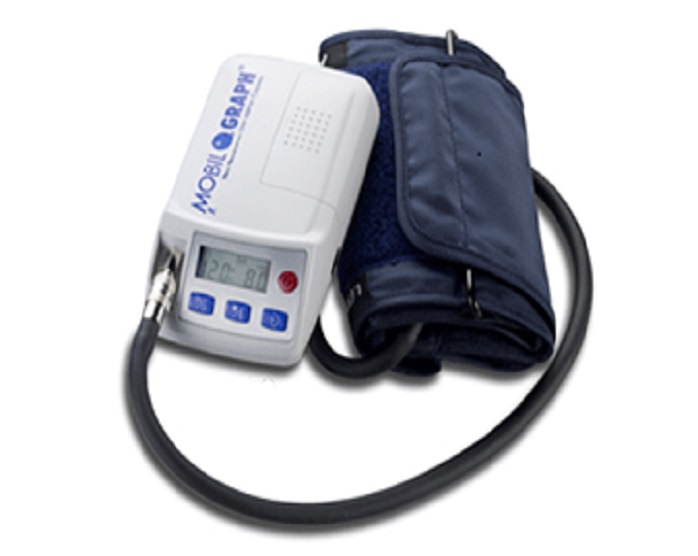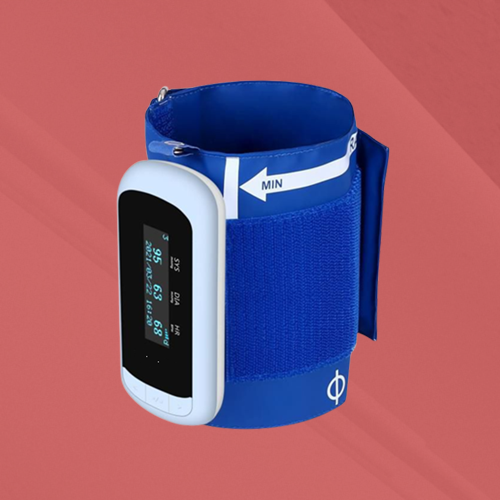Recognizing the Importance of the ABPM Test in High Blood Pressure Monitoring
Ambulatory Blood Pressure Monitoring (ABPM) is a pivotal tool in handling high blood pressure. By offering continual blood pressure readings over 1 day, it uses understandings that conventional measurements can not. This technique can reveal conditions such as white coat disorder and concealed high blood pressure. Understanding these nuances is crucial for effective person care. As healthcare advances, the implications of ABPM in forming individualized treatment strategies come to be significantly substantial. What does this mean for the future of hypertension administration?
What Is Ambulatory Blood Pressure Monitoring (ABPM)?
Ambulatory Blood Pressure Monitoring (ABPM) is a technique that permits the continuous dimension of blood pressure over a 24-hour duration while patients take part in their daily tasks. This cutting-edge method includes making use of a mobile gadget that immediately takes blood pressure readings at established intervals, generally every 15 to 30 mins. ABPM offers a detailed profile of blood pressure fluctuations throughout the night and day, capturing variants that may be missed throughout common office measurements.It is especially advantageous for identifying problems such as hypertension and white coat syndrome, where patients display elevated analyses just in medical setups. By giving real-time data, ABPM boosts the accuracy of hypertension evaluations and help in tailoring therapy strategies. The understandings acquired from this monitoring may cause much better administration of cardio health, reinforcing the importance of ABPM in contemporary medical technique.
How ABPM Varies From Traditional Blood Pressure Measurements
While typical blood pressure measurements usually count on readings absorbed a medical setting, ABPM offers an extra comprehensive method by assessing blood pressure over a full 24-hour period. Typical methods commonly generate a limited number of analyses that might not record fluctuations in blood pressure throughout the day. In comparison, ABPM enables continuous monitoring, offering insights right into variations throughout different tasks, such as sleeping and exercising.Additionally, traditional measurements might be influenced by the patient's anxiousness during a doctor's go to, called "white layer syndrome," possibly causing improperly high analyses. ABPM minimizes this issue by gathering information in an acquainted atmosphere, generating an extra precise representation of an individual's blood pressure. The device commonly takes measurements at normal periods, ensuring thorough data collection. This fundamental distinction highlights the significance of ABPM in supplying a total picture of a patient's blood pressure profile.
Benefits of ABPM in High Blood Pressure Management
Using Ambulatory Blood Pressure Monitoring (ABPM) presents considerable benefits in handling high blood pressure. It provides precise and continuous blood pressure analyses, aiding to determine conditions such as white coat syndrome. This precise data makes it possible for doctor to make more tailored treatment adjustments customized to private patient demands.
Precise Blood Pressure Monitoring

Identifying White Layer Disorder
Ambulatory Blood Pressure Monitoring (ABPM) plays a significant duty in determining white layer syndrome, a sensation where patients exhibit elevated blood pressure readings in a scientific setup yet preserve typical degrees in their day-to-day lives. This condition can cause misdiagnosis and unnecessary treatment, making complex high blood pressure administration. ABPM gives a thorough analysis of blood pressure over a 24-hour period, recording variations that occur during daily tasks and sleep. By contrasting these analyses to clinic measurements, medical care providers can distinguish in between real high blood pressure and white layer syndrome. Inevitably, recognizing this syndrome is vital for tailoring appropriate treatment techniques and avoiding overtreatment, making sure that clients obtain care that accurately shows their blood pressure status outside the clinical setting.
Customized Treatment Adjustments
Enhancing high blood pressure monitoring through individualized therapy adjustments ends up being feasible with the understandings gained from ABPM. This method supplies continuous blood pressure monitoring, allowing health care suppliers to determine patterns and changes that might not be evident throughout common office visits. By understanding a client's one-of-a-kind blood pressure profile, medical professionals can customize therapy plans that think about variables such as medicine efficiency, way of life influences, and specific reaction to treatment. This personalized approach not only enhances individual adherence however also enhances overall end results by minimizing the risk of complications related to uncontrolled hypertension. Ultimately, the usage of ABPM encourages medical professionals to make educated choices, causing a lot more efficient management approaches that line up with each individual's certain demands.
Identifying White Layer High Blood Pressure and Masked High Blood Pressure
White coat hypertension takes place when patients show raised blood pressure analyses in a clinical setup due to anxiousness, while their measurements are regular in various other settings. On the other hand, concealed high blood pressure describes people whose blood pressure is regular during clinical sees however elevated in day-to-day live. Comprehending these 2 phenomena is essential for precise high blood pressure administration and therapy decisions.
Defining White Coat High Blood Pressure
Hypertension administration typically entails distinguishing between various blood pressure problems, particularly white coat hypertension and concealed hypertension. White coat high blood pressure is defined by raised blood pressure analyses in scientific setups, usually due to stress and anxiety connected with medical environments. Clients with this problem generally exhibit typical blood pressure levels outside of these setups. This phenomenon can my sources result in misdiagnosis and about his unneeded therapy if not properly identified. It is vital for doctor to recognize this problem to avoid overtreatment and to guarantee accurate hypertension monitoring. ABPM test in Bangalore. Using ambulatory blood pressure monitoring (ABPM) can aid set apart white layer hypertension from continual high blood pressure, enabling more efficient and customized therapy techniques for people experiencing this one-of-a-kind blood pressure feedback
Recognizing Masked Hypertension
Masked high blood pressure positions a significant challenge in high blood pressure management, as it often goes unseen in clinical setups. This condition occurs when a person's blood pressure analyses are typical throughout medical gos to but raised in the house or during daily tasks. Unlike white layer hypertension, where anxiety in a professional environment leads to momentary spikes in blood pressure, covered up high blood pressure can lead to unrecognized cardio dangers. Patients might believe they have regular blood pressure, disregarding essential lifestyle modifications or therapies. Determining covered up hypertension is vital, as it can lead to serious wellness difficulties with time. Ambulatory Blood Pressure Monitoring (ABPM) is an efficient device for discovering this problem, allowing medical care experts to offer timely treatment and boost client outcomes.
The Function of ABPM in Personalized Therapy Strategies
As health care suppliers significantly recognize the value of individualized care, the application of Ambulatory Blood Pressure Monitoring (ABPM) has actually become essential in tailoring treatment prepare for patients with hypertension. ABPM enables continual blood pressure measurement over 1 day, disclosing patterns that might be missed out on during conventional office visits. This thorough information uses understandings right into an individual's blood pressure pop over here irregularity and nighttime levels, which are critical for comprehending overall cardiovascular threat.
Translating ABPM Outcomes: Understanding Patterns and Trends
Translating the outcomes from Ambulatory Blood Pressure Monitoring (ABPM) requires an eager understanding of different patterns and patterns that emerge from the gathered data. Clinicians assess the 24-hour blood pressure profile, comparing daytime and nighttime readings to determine possible white-coat high blood pressure or concealed high blood pressure. A regular altitude in daytime analyses may indicate improperly regulated high blood pressure, while nighttime dips can indicate reliable blood pressure management or nocturnal hypertension, which positions added cardiovascular risks.Trends over time, such as continual boosts or variations, are additionally crucial. Variability in readings can suggest underlying concerns, such as stress and anxiety or medication non-adherence. Furthermore, the evaluation of blood pressure patterns in relation to everyday activities can give understandings into way of life elements influencing high blood pressure. By thoroughly interpreting these results, healthcare experts can tailor therapy methods to improve person results in hypertension administration, ultimately resulting in far better cardiovascular health.
The Future of Blood Pressure Monitoring and High Blood Pressure Treatment
Emerging innovations and developments are positioned to reinvent blood pressure monitoring and hypertension care in the coming years. Wearable gadgets outfitted with sophisticated sensing units are anticipated to provide continuous, real-time blood pressure readings, permitting even more tailored treatment programs. These gadgets will certainly not just boost person engagement however likewise assist in remote monitoring by doctor, causing timely interventions.Artificial intelligence and artificial intelligence algorithms will play an essential role in evaluating patient information, identifying patterns, and predicting hypertension-related problems. This anticipating capacity can result in even more aggressive administration methods. In addition, telehealth services will likely broaden, allowing individuals to talk to experts and receive customized recommendations without the requirement for in-person visits.Furthermore, advancements in mobile applications might empower patients to track their blood pressure separately, fostering a feeling of ownership over their health and wellness. On the whole, the future of blood pressure monitoring and high blood pressure care shows up promising, with innovation at its forefront.
Regularly Asked Inquiries

How much time Does an ABPM Test Generally Last?
The ABPM examination typically lasts 24 hr. Throughout this duration, a portable device measures blood pressure at routine intervals, offering comprehensive data on a person's blood pressure patterns throughout daily tasks and rest.
Can ABPM Be Used for Kids and Teenagers?
ABPM can indeed be made use of for youngsters and teenagers - ABPM test in Bangalore. It provides important understandings into their blood pressure patterns, assisting doctor properly diagnose and manage high blood pressure in younger populaces, advertising much better long-term wellness end results

What Should I Stay clear of Prior To Taking an ABPM Test?

Before taking an ABPM test, individuals need to prevent high levels of caffeine, nicotine, and strenuous workout, as these can briefly raise blood pressure readings. In addition, it's suggested to avoid using limited garments that may hinder dimension accuracy.
Just how Commonly Should I Undergo ABPM Screening?
The regularity of ABPM testing varies based on private health demands. Normally, it is suggested every 6 to twelve months, specifically for those with uncontrolled hypertension or substantial changes in blood pressure medicine. Regular monitoring help effective administration.
Is ABPM Covered by Insurance Policy Strategies?
The insurance coverage of ABPM screening by insurance strategies varies significantly. Clients should consult their certain insurance policy service providers to establish qualification and any type of possible out-of-pocket expenses associated with this analysis procedure for hypertension monitoring.